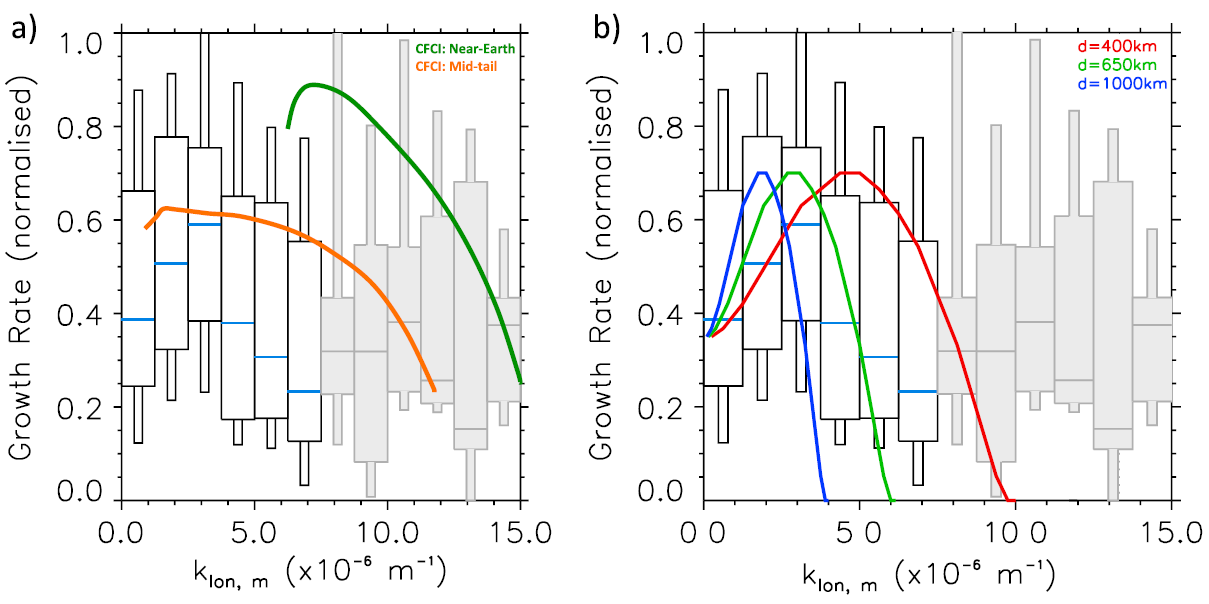MIST
Magnetosphere, Ionosphere and Solar-Terrestrial
Nugget: Statistical characterisation of the growth and spatial scales of the substorm onset arc
By Nadine Kalmoni, UCL Mullard Space Science Laboratory, Holmbury St. Mary, Dorking, Surrey, UK
During southward IMF reconnection on the dayside leads to a build up of magnetic energy in the tail. As flux is piled into the tail the configuration becomes unstable leading to an explosive release in magnetic energy, termed a substorm. The rearrangement of the magnetic field is accompanied by highly dynamic substorm aurora.
The relatively high temporal and spatial resolution of the THEMIS mission All Sky Imagers have allowed recent observations of small scale azimuthal structures, auroral beads, which form in the minutes leading to auroral onset [e.g. Rae et al., 2009]. Conjugate observations in the Northern and Southern hemisphere suggest that the beads have a common magnetotail driver and are the ionospheric signature of a magnetospheric instability [Motoba et al., 2012].
Kalmoni et al. [2015] statistically analyse the growth and spatial scales of clear signatures of auroral beads observed in the minutes leading to substorm onset. The statistical observations are compared with the Shear-Flow Ballooning Instability (SFBI) [Voronkov et al., 1997] and the Cross-Field Current Instability [Lui, 2004 and references therein] which have both been proposed to play a role in substorm onset. Our observations conclude that the SFBI initiated in the near-Earth plasma sheet is the most likely explanation.

Normalised growth rate as a function of spatial scale in comparison to (a) the Cross-Field Current Instability for inner-edge and mid-tail plasma sheet parameters and (b) the Shear-Flow Ballooning Instability for varying shear-flow widths.